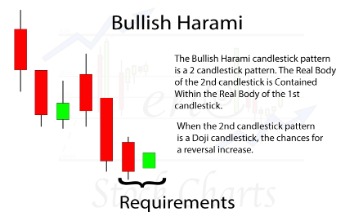How To Trade Bullish Pennant Chart Pattern

However, on markets like stock, where the traders can see the volume figures clearly, Pennants alone can help them to analyze the breakout. They are fractal in nature and can appear at all degrees of trend. With the possibilities of potential breakouts, https://g-markets.net/ accurately spotting a Pennant pattern becomes important. The bullish pennant is a continuation pattern as it tends to help the existing uptrend extend higher. In essence, the pennant helps traders identify the stage at which the trend is currently in.

In addition, the price tested the lower border, where the bears went ahead. This is also emphasized by growing volumes, which is one of the criteria for determining the pattern. According to this strategy, the take profit is defined by the height of the pennant itself. That is, from the highest to the lowest point formed in the pattern. The pennant pattern belongs to trend continuation patterns, like other chart patterns, such as the flag or the ascending triangle.
Eventually, there is a breakout and the price continues into an uptrend at the point where the levels converge. This shape is similar to the shape of the pennant flags typically used in sporting events. The pennant starts with the “pole” or “flagpole,” which represents the previous trend. This price range decreases over time, forming the “flag” shape when the support and resistance trendlines converge with each other, as shown in the figure below. When the lines converge, there will then be a breakout from the pennant chart, continuing the previous trend of the pole.
and become an expert Forex trader.
The second is to use the general rule of thumb that markets will often revert briefly before a full breakout begins. In these cases, the previous support turns into resistance – and resistance into support. Say, for example, that EUR/USD enters into a bullish wedge and breaks its resistance line at $1.084. That price may become a support line as the market retests its previous range before market surging higher.
- For our EUR/USD trade, for example, you might be running the risk of 10 or 20 points in exchange for 200 points of prospective profit.
- We noted earlier that a trader is advised to wait for a breakout to take place before entering the long trade.
- The ideal time to trade with a pennant is on confirmation of the breakout after a sudden, sharp move in price.
- However, this retracement is small and weak, causing the price to dip again and form a sideways trend.
- Just like any other continuation pattern, the bearish pennant also helps the downtrend to reach even lower.
- In addition, a price gap up was formed during the breakout, which indicates the formation of a new intermediate support level.
With both strategies, your stop is far closer than the point at which you take profit. This is one reason why pennants are so sought after by traders – relative to other patterns, the risk-reward ratio tends to be high. For our EUR/USD trade, for example, you might be risking 10 or 20 points in exchange for 200 points of potential profit.
Pennant Patterns: Trading Bearish and Bullish Pennants
Trading bearish and bullish pennants can provide you with yet another way to earn some extra profits on your trades. You may discover that there are more ways to find tradable patterns than you had ever imagined. A bear pennant pattern consists of a larger bullish candlestick which forms the flag pole. It’s then followed by several smaller consolidation candles that form a pennant. A common place to see this set up is during consolidation near resistance levels; once it rejects, price action breaks down out of the apex of the pennant. Which can cause an increase in a pressure to the downside from sellers and shorts.
Therefore, when trading with the bullish pennant chart pattern, you can take profits gradually, closing most of the positions with a gain upon reaching the first goal. Stop loss should be set below the support level according to risk management. The bear pennant is a continuation pattern that signals that the ongoing trend is likely to continue. It occurs during a bearish trend and indicates a possible extension of a downtrend. Forex traders use this classical chart pattern to join the existing trend and short sell an asset.
Megaphone Pattern
The bearish pennant pattern is a downtrend continuation chart pattern. The formation of this pattern occurs after an active price decline. Identifying a bullish pennant on a price chart is sometimes difficult, especially for beginners, due to its similarity to symmetrical triangle and bull flag price patterns. However, if you know the peculiarity of constructing this chart pattern, it will not be hard to identify. You can also use technical indicators to determine the entry point.
A Market Signal: Bull Flags, Ascending Triangles, and Pennant Continuation Patterns – The Ticker Tape
A Market Signal: Bull Flags, Ascending Triangles, and Pennant Continuation Patterns.
Posted: Tue, 16 Feb 2021 08:00:00 GMT [source]
Consolidation occurs due the two sides fighting to regain control. During consolidation periods many different candlesticks form which could cause some confusion, so be sure to wait for confirmation. The second is to use the general rule that markets will typically how to trade bearish and bullish pennants go back briefly prior to a full breakout begins. In these cases, the previous assistance develops into resistance– and resistance into support. State, for instance, that EUR/USD participates in a bullish wedge and breaks its resistance line at $1.084.
Pennant Trading Strategy 1: Trading based on flagpole height
Whether you’re a seasoned trader or a budding investor, understanding how to trade bullish and bearish pennants can unlock remarkable profit potential. In this article, we delve deep into the intricacies of these patterns, equipping you with practical strategies to navigate the market with confidence. Like with bullish pennants, falling volume is often a good sign that a bearish pennant is forming.

Any research provided should be considered as promotional and was prepared in accordance with CFTC 1.71 and designed to promote the independence of investment research. Pennants are sought after by traders because they tend to lead to extended breakouts. So when you’re trading them, you want to find the perfect place to open your position and ride the subsequent move. This is a level where the price suddenly moves in continuation of a trend. Volume is usually high at the pennant’s pole, as well as when breaking the pennant’s upper border. What we really care about is helping you, and seeing you succeed as a trader.
What is A Bearish Pennant?
The pennant will be formed during a period of consolidation and then traders will look for the price to continue downward out of the bearish pennant. Measure the height of the flagpole and project it downwards from the breakout point. This calculation provides an estimate for the potential price target, guiding your profit-taking strategy for the continuation of the downtrend.
- However, the bull pennant features converging trendlines that form a triangle instead of a flag.
- As in the case of bullish pennants, the profit target is set at the height of the flagpole or the entire pattern.
- Initiate a long position when the price breaks out above the upper trend line of the pennant pattern.
The bull pennant is a bullish continuation pattern that signals the extension of the uptrend after the period of consolidation is over. On the other hand, wedges are reversal patterns that can form either in an uptrend or a downtrend. They are characterized by two converging trendlines that move in opposite directions, either upward or downward. Wedges are generally classified into two types, rising wedges, and falling wedges.
According to risk management rules, a stop loss is set a little lower than the crossing of the pattern lined. The picture below shows the formation of an impulse price decline, after which the quotes turned up for a short time. The consolidation phase allows you to open a profitable sell position with predetermined entry and exit points.
What is a bullish pennant?
In summary, pennants are continuation patterns that signal the continuation of the prior trend, while wedges are reversal patterns that signal a potential trend reversal. Once you have identified the pattern, it is important to wait for the breakout from consolidation before entering a trade. This breakout typically occurs to the upside, signaling a continuation of the uptrend. The pattern construction implied further price movement along the upper trend line after a short stage of asset consolidation in a narrowing range.
Next, the position can be opened after the formation of the first candlestick, which closed outside the broken level. The pattern should continue when the price breaks out the lower boundary of the pennant. The price should decline by the height of the pennant or its flagpole amid increasing volumes. Thus, the pattern completes its construction with several candlesticks.
